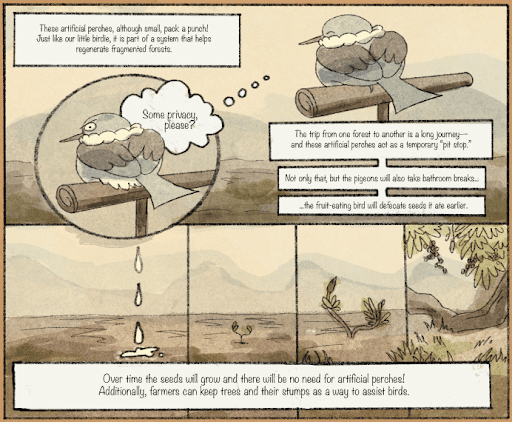Reforestation efforts are getting a boost from an unexpected source: bird poop. An international team of scientists, led by Dr. Jelaine Gan from the University of the Philippines, has found that strategically placed perches can significantly aid forest regeneration. The research highlights a new method for re-seeding lands. By attracting birds to degraded areas, seeds are naturally dispersed. This offers a biodiversity-friendly and cost-effective choice to traditional tree planting.
Conventional reforestation involves resource-intensive tree planting. This includes labor, seedling costs, and continuous nurturing. There are also concerns about planting the most appropriate native species for optimal biodiversity. But forests have their own natural healing abilities. Scientists are exploring ways to accelerate this natural recovery through Assisted Natural Regeneration (ANR). A key ANR strategy involves boosting the seed supply in damaged areas.

The idea is simple: install bird perches near the forest, and fruit-eating birds will flock to them. While resting on the perches, the birds deposit seeds through their droppings. These seeds then have the potential to grow into new trees. To assess the effectiveness of this approach, researchers conducted a comprehensive review of existing studies.
The team analyzed 396 publications. They examined different types of perches: artificial, semi-natural, and natural. Artificial perches were typically man-made poles. Semi-natural perches consisted of dead branches supported by props. Natural perches ranged from shrubs and trees to rock formations.
The research revealed that all three perch types increased seed dispersal. More seeds, and a greater variety of species, were found beneath perches compared to control areas. This confirmed the effectiveness of perches in attracting seed-spreading birds.
Yet, seed arrival is only the first step. Seedlings must also germinate and grow. The study found that natural perches had a significant positive impact on seedling establishment. Natural perches increased both the number and diversity of seedling species.
The scientists recommend preserving existing natural perches. These include shrubs and scattered trees in agricultural areas. In areas lacking natural features, artificial and semi-natural perches can be used to increase seed rain. Extra treatments, like soil improvement and weeding, can further boost seedling growth. This research underscores the power of leveraging natural processes for effective and sustainable reforestation. Using bird perches is a promising strategy for restoring degraded ecosystems.




